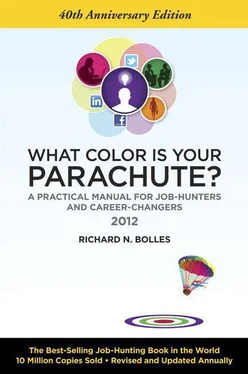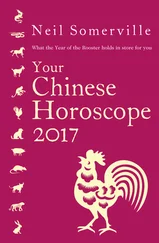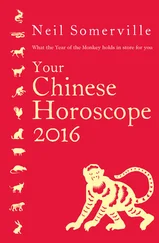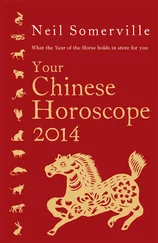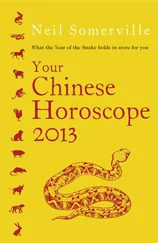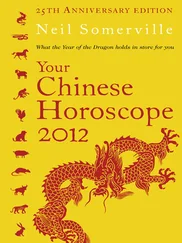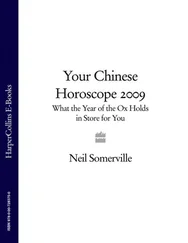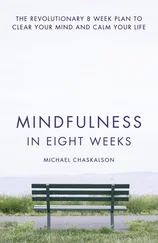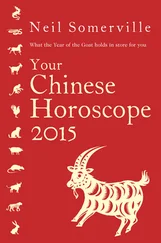Whoa! This is one of the five best ways to look for a job? Well, yes; it’s all relative. But to put things in perspective, do note that this method’s success rate is almost five times higher than the success rate for resumes. In other words, by asking for job-leads from your family and friends, you have an almost five times better chance of finding a job, than if you had just sent out your resume .
47% Success Rate
2. Knocking on the door of any employer, factory, or office that interests you, whether they are known to have a vacancy or not.This search method apparently has anywhere up to a 47 percent success rate. That is, out of every 100 people who use only this search method, 47 will get lucky, and find a job thereby; 53 job-hunters out of 100 will not—if they use only this one method to search for work. But again, for perspective, note that by going face-to-face you have an almost seven times better chance of finding a job, than if you had just sent out your resume.
65% Success Rate
3. By yourself, using the index to your phone book’s Yellow Pages to identify subjects or fields of interest to you in the town or city where you want to work, and then calling up or visiting the employers listed in that field, to ask if they are hiring for the type of position you can do, and do well.This method apparently has about a 65 percent success rate. That is, out of every 100 job-hunters or career-changers who use only this search method, 65 will get lucky and find a job thereby; 35 job-hunters out of 100 will not—if they use only this one method to search for them. For perspective, however, note that by doing targeted phone calls by yourself , you have a nine times better chance of finding a job, than if you had just sent out your resume.
70% Success Rate
4. In a group with other job-hunters, a kind of “job-club” or “job support group,” using the phone book’s Yellow Pages to identify subjects or fields of interest to you in the town or city where you are, and then calling up or visiting the employers listed in that field, to ask if they are hiring for the type of position you can do, and do well.This method is the same as the previous method, except here you work in a group and you choose a partner to work with in identifying job-leads. Moreover, you share with the rest of the group what kind of job you are looking for. This method apparently has at best a 70 percent success rate. That is, out of every 100 job-hunters or career-changers who use only this search method, 70 will get lucky and find a job thereby; 30 job-hunters out of 100 will not—if they use only this one method to search for them. For perspective, however, note that by doing targeted phone calls with a group to support you , you have an almost ten times better chance of finding a job, than if you had just sent out your resume. Why does this method work better than doing it alone? Well, let’s say you’re in a job-club that has 48 other members. Once you tell them what you’re looking for, you get an extra 48 pairs of eyes looking on your behalf, and an extra 48 pairs of ears listening on your behalf—all the time that they are out there looking for job-leads themselves.
Note: the success rate for this approach has declined precipitously . Nathan Azrin invented this method back in 1973. It had an 84 to 92 percent success rate; but there are virtually no “job-clubs” today that follow his model, and there’s the problem.
Azrin’s job-club was all about action, calling for the job-club to meet every single weekday, all day, doing phoning with partners in the morning, and going out and calling upon employers every afternoon. [14]Most groups that call themselves “job-clubs” today are only shadows of the Azrin model, and may more accurately be described as “job support groups.” They tend to meet once weekly at best, for just two or three hours at a time, and devote their meetings to inspiration, pep talks, and exchanging job-leads; but the actual job-hunt occurs outside the group meeting. As a result, the success rate is as low as 10 percent.
Job support groups do have one sterling virtue, however, and that is, they provide community to the otherwise lonely job-hunter. This is very, very valuable. No one should have to job-hunt by themselves.
86% Success Rate
5. Doing an Inventory of Yourself.This doesn’t sound like a job-hunting method, but it is. It was invented by the late Bernard Haldane, polished by the late John Crystal, and organized by Daniel Porot. It involves doing extensive homework on yourself before you go out there pounding the pavement. This method has an apparent 86 percent success rate, the highest by far of any job-hunting method. You know by now that this means out of every 100 job-hunters or career-changers who use this method, 86 will get lucky and find a job thereby; 14 job-hunters out of 100 will not—if they use only this method to search for vacancies. Such an effectiveness rate is astronomically higher than virtually every other job-hunting method there is. For example, doing homework on yourself works twelve times better than resumes, when you’re looking for work. This means, that by doing the hard thinking this method requires, you have a 1,200 percent better chance of finding a job than if you just send out resumes!
This method revolves around three simple words: you do an inventory of your answers to What, Where, and How.
1. WHAT. This has to do with your skills, specifically your transferable skills. You need to inventory and identify what skills you have that you most enjoy using . I didn’t say: that you are best at , or that are the most marketable. No, these are the ones you enjoy using the most. They are called your transferable skills,because they are transferable to any field/career that you choose, regardless of where you first picked them up. These are usually verbs—the gerund form of verbs, actually —like: analyzing, organizing, researching, communicating, etc.
2. WHERE. This has to do with job environments. Think of yourself as a flower. You know that a flower that blooms in the desert will not do well at 10,000 feet up—and vice versa. Every flower has an environment where it does best. In that sense, you are like a flower. You need to decide where you would most enjoy using your skills, because that is where you will do your most effective work. Experts call these your “fields of fascination,” or just “fields.” These are usually nouns, like technology, finance, the arts, chemistry, automobiles, criminal justice, nursing, hospitality, etc.
3. HOW. You need to decide how to get where you want to go. This has to do with finding out the names of the jobs you would be most interested in, andthe names of organizations (in your preferred geographical area) that have such jobs to offer, andthe names of the people or person there who actually has the power to hire you. And, how you can best approach that person to show them how your skills can help them with their goals or challenges. How, if you were hired there, you would not be part of the problem, but part of the solution.
Why does this self-inventory work so well as a job-hunting method? Well, there are three reasons that I have observed, over the years:
a. If you do this self-inventory, you can then more accurately define to yourself just exactly what you’re looking for, beneath the shifting shape of job-titles. In a brutal economy, job-titles like “accountant” just aren’t detailed enough. New thinking is called for: as we saw earlier, you are not “an accountant” or “a construction worker” or whatever. You are a person, who… You are a person who has these skills and these experiences. You are a person who can describe yourself in alternative ways.
Читать дальше
